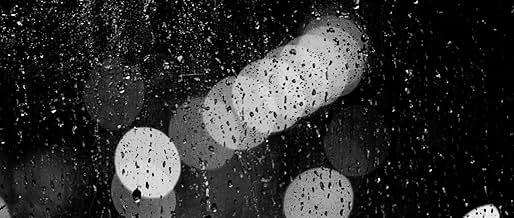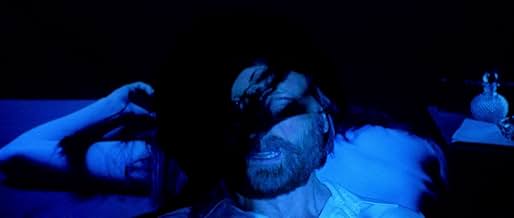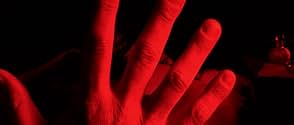IMDb रेटिंग
5.9/10
4.5 हज़ार
आपकी रेटिंग
अपनी पत्नी की गुमशुदगी का पता लगाने के लिए एक व्यापार यात्रा से घर लौटते हुए, एक आदमी आधे पके हुए सुराग, प्रलोभन, छल, और हत्या के एक असली बहुरूपदर्शक में गहराई से गहराई तक पहुंच जाता है. क्य... सभी पढ़ेंअपनी पत्नी की गुमशुदगी का पता लगाने के लिए एक व्यापार यात्रा से घर लौटते हुए, एक आदमी आधे पके हुए सुराग, प्रलोभन, छल, और हत्या के एक असली बहुरूपदर्शक में गहराई से गहराई तक पहुंच जाता है. क्या इमारत में किसी को कुछ पता है?अपनी पत्नी की गुमशुदगी का पता लगाने के लिए एक व्यापार यात्रा से घर लौटते हुए, एक आदमी आधे पके हुए सुराग, प्रलोभन, छल, और हत्या के एक असली बहुरूपदर्शक में गहराई से गहराई तक पहुंच जाता है. क्या इमारत में किसी को कुछ पता है?
- निर्देशक
- लेखक
- स्टार
- पुरस्कार
- 3 जीत और कुल 10 नामांकन
फ़ीचर्ड समीक्षाएं
I love Giallo stuff and when there's a movie that pays tribute or respect to the genre, I'd give it a go. So with this one, seeing a really cool cover of the DVD and being French and all, hey off course :) I like the idea of a missing lover story and I really like the stylized detailed, closed up shots and sounds of many of the scenes. BUT I find it a bit much. I feel that with Giallo, being psychedelic doesn't mean,psychedelic shots of every scenes, this movie has an amazing / best art nouveau back drop that it self already gives a certain persona. I find my self looking the other way just every now and then to rest my eyes also press the ff button just because my brain is telling me " yes I got it, got the idea...next ". However I still recommend it to you, because it has a very good story and all this stuff I'm writing about is worth to look at. But for me.....a bit over done
Certainly in the spirit of giallo but with the soul of Kafka. No simple narrative flow, not even a regular narrative structure, this visual and aural treat is not the simplest of watches. Always beautiful with continuous references to stained glass, art nouveau, eyes, knives and bared and bleeding flesh, the music and effects are also alluring, evocative and disturbing. A man returns from a business trip to find he cannot find his wife ( Edwige, nudge nudge aficionados! ) and that's about it, unless you count the wondrous building in which the film takes place or the spaces behind the walls. The directing duo are clearly fascinated by the Italian genre films of the 60s and early 70s and deliver up the most sumptuous offering, its just that, not unreasonably, they are less interested in the story lines but more in the more primal elements that go into even the lesser giallo. They love the colours, the sounds, the wide eyed screams and the trickling blood. The confused participants who know not whether they are mad or even dead, cannot help but draw us in to this manic mayhem and those of us who, similarly enjoy this craziness, can only applaud and breathe a sigh of relief we got out alive.
I attended the Belgian premiere of 'L'Étrange Couleur des Larmes de ton Corps' at Film Fest Gent 2013 after reading that the film would be a homage to the giallo genre and therefore would contain music by Ennio Morricone and Bruno Nicolai (in my opinion the two best film composers there are). The only giallo I have seen until now is 'Suspiria', though I'm familiar with the names of some of the directors and actresses and also some of the titles through the work of Morricone and Nicolai. I undoubtedly missed a lot of references, but of course I understood that the name of Dan's wife, Edwige, was no coincidence :)
I was ready to immerse myself in a pure genre film, but it was still quite a challenging trip. On the plus side, the film is beautifully shot, with great use of extremely vivid colours and interior (Dan's breathtaking house by - I assume - Horta) and exterior locations (the Law Courts of Brussels). Much thought has also been put into the editing, the sound design and the choice of wonderful Italian film music. On a technical/aesthetic level, this movie is a triumph.
On the downside, the script is deliberately disorienting, which is even reinforced by most of the shots being exhausting close-ups. Some sequences/parts of the story are too short (the bearded man taking pictures of beautiful women, which is never explained), while others last too long (the sequence where Dan wakes up 20 times thanks to an incredibly irritating door bell that rings about 100 times). Although the story is thin, it's often confusing and hard to follow and the film's conclusion is rather unsatisfying.
All in all, this clearly is more of an art film than a narrative film, so while this means that it's beautiful to look at from start to finish, the story leaves much too be desired.
I was ready to immerse myself in a pure genre film, but it was still quite a challenging trip. On the plus side, the film is beautifully shot, with great use of extremely vivid colours and interior (Dan's breathtaking house by - I assume - Horta) and exterior locations (the Law Courts of Brussels). Much thought has also been put into the editing, the sound design and the choice of wonderful Italian film music. On a technical/aesthetic level, this movie is a triumph.
On the downside, the script is deliberately disorienting, which is even reinforced by most of the shots being exhausting close-ups. Some sequences/parts of the story are too short (the bearded man taking pictures of beautiful women, which is never explained), while others last too long (the sequence where Dan wakes up 20 times thanks to an incredibly irritating door bell that rings about 100 times). Although the story is thin, it's often confusing and hard to follow and the film's conclusion is rather unsatisfying.
All in all, this clearly is more of an art film than a narrative film, so while this means that it's beautiful to look at from start to finish, the story leaves much too be desired.
Dan Kristensen (Klaus Tange) returns home one day and discovers that his wife Edwige has disappeared. Dan starts investigating Edwige's disappearance and the strange and mysterious places and people of his apartment complex. Did she leave him? Is she dead? Also, what the hell is going on with his creepy neighbors? Of course the police can't help him, they just don't believe him. Soon his search and obsession cause him to descent into a world of madness. Fact and fiction become harder to distinguish. Dreams and nightmares intertwine with reality until they become one and the same. Will he ever find his wife's killer? Is there a killer? Who's the killer?
Written & directed by Hélène Cattet and Bruno Forzani The Strange Color of Your Body's Tears is a natural progression from their 'ABCs of Death' segment O is for Orgasm. The similarities aren't only on a surface level (cinematography, editing), but also on a thematic level, L'ètrange couleur des larmes de ton corps (original title) represents both an evolution and maturation for the two auteurs. Not only is this a very entertaining and visceral film, but it's also a complicated, surreal story. The narration is anything but linear or straightforward. Forzani explained that they are both inspired by the Italian Giallo, but also by Satoshi Kon. Cattet also cited Brian De Palma as an influence.
The characters in The Strange Color of Your Body's Tears have a way of relating to the space around them reminiscent of Michelangelo Antonioni's work (namely L'Eclisse). The '70s score, borrowed directly from Italian films creates a playful, but at the same time scary mood, while the loud sound mixing and the entrancing imagery enable the viewer to be transported into the film's world. Even if the story is anything but clear on a first viewing, the film is always interesting to watch and experience on a purely sensorial level (much like a David Lynch film). Like Amer, this film more than just a love letter to Italian cinema, it's a work of art that stands on its own. There are throwback qualities to it, but the film works for a modern audience as well.
What I appreciated and take away most from complex films like this one are the cinematography (à la Tutti i colori del buio), the tone and atmosphere and the fantastic soundtrack. While it loses some of its pace in the second act, it returns with a fury in the last act, with flashbacks, black & white sequences (with an altered frames per second rate) and all sorts of violent crazy stuff happening. It is a very re-watchable film, especially because it's difficult to fully understand on a first viewing (or ever?). I was a little bit let down by the poor character development in the film, though I realize that wasn't the film's intent or goal, still I like to have relatable characters beyond their physical appearance, accent and attire.
Personally, I'd say this is a step up from Amer and so I can only be excited for anything the two will do in the future. I recommend this film if you enjoyed previous work from Cattet & Forzani, you like the films or directors I've mentioned or just want to try something new. This is definitely a film best enjoyed in theaters (even if people walking out are annoyingly distracting), if you watch it at home make sure you have a good sound system: That's how the directors intended you to view their picture.
Written & directed by Hélène Cattet and Bruno Forzani The Strange Color of Your Body's Tears is a natural progression from their 'ABCs of Death' segment O is for Orgasm. The similarities aren't only on a surface level (cinematography, editing), but also on a thematic level, L'ètrange couleur des larmes de ton corps (original title) represents both an evolution and maturation for the two auteurs. Not only is this a very entertaining and visceral film, but it's also a complicated, surreal story. The narration is anything but linear or straightforward. Forzani explained that they are both inspired by the Italian Giallo, but also by Satoshi Kon. Cattet also cited Brian De Palma as an influence.
The characters in The Strange Color of Your Body's Tears have a way of relating to the space around them reminiscent of Michelangelo Antonioni's work (namely L'Eclisse). The '70s score, borrowed directly from Italian films creates a playful, but at the same time scary mood, while the loud sound mixing and the entrancing imagery enable the viewer to be transported into the film's world. Even if the story is anything but clear on a first viewing, the film is always interesting to watch and experience on a purely sensorial level (much like a David Lynch film). Like Amer, this film more than just a love letter to Italian cinema, it's a work of art that stands on its own. There are throwback qualities to it, but the film works for a modern audience as well.
What I appreciated and take away most from complex films like this one are the cinematography (à la Tutti i colori del buio), the tone and atmosphere and the fantastic soundtrack. While it loses some of its pace in the second act, it returns with a fury in the last act, with flashbacks, black & white sequences (with an altered frames per second rate) and all sorts of violent crazy stuff happening. It is a very re-watchable film, especially because it's difficult to fully understand on a first viewing (or ever?). I was a little bit let down by the poor character development in the film, though I realize that wasn't the film's intent or goal, still I like to have relatable characters beyond their physical appearance, accent and attire.
Personally, I'd say this is a step up from Amer and so I can only be excited for anything the two will do in the future. I recommend this film if you enjoyed previous work from Cattet & Forzani, you like the films or directors I've mentioned or just want to try something new. This is definitely a film best enjoyed in theaters (even if people walking out are annoyingly distracting), if you watch it at home make sure you have a good sound system: That's how the directors intended you to view their picture.
At first I couldn't really explain why I didn't like this film. After all, the foyer and staircase in the building are the kind of atmospheric luxury one expects in a giallo or apartment horror, and the old lady upstairs reminded me a bit of The Sentinel, one of my favorite films ever.
I think it's the main guy. I don't like him. Not that I like every horror protagonist or "point of view" killer in giallo, but I couldn't empathize or feel horror, I just felt a kind of worldly distaste. The kind of distaste I feel for Wall Street moguls, tax accountants, and Republicans. Not the kind of supernatural fascination or psychological curiosity one might have in the horror/thriller genres.
In fact nothing about this felt haunted to me. There was no pang of nostalgia, no whisper of ghosts (real or imagined), no monstrous memories sparked, no sleeping dogs refused to lie. The Strange Color of Your Body's Tears is more of surreal modern nightmare centering about a rich white man. His dream felt incoherent in a bad way, it did not compel me to pay attention, I could barely get through this. But I have to give it 6 stars for the incredible beauty of particular scenes.
I think it's the main guy. I don't like him. Not that I like every horror protagonist or "point of view" killer in giallo, but I couldn't empathize or feel horror, I just felt a kind of worldly distaste. The kind of distaste I feel for Wall Street moguls, tax accountants, and Republicans. Not the kind of supernatural fascination or psychological curiosity one might have in the horror/thriller genres.
In fact nothing about this felt haunted to me. There was no pang of nostalgia, no whisper of ghosts (real or imagined), no monstrous memories sparked, no sleeping dogs refused to lie. The Strange Color of Your Body's Tears is more of surreal modern nightmare centering about a rich white man. His dream felt incoherent in a bad way, it did not compel me to pay attention, I could barely get through this. But I have to give it 6 stars for the incredible beauty of particular scenes.
क्या आपको पता है
- ट्रिवियाThe film features fragments of Ennio Morricone's Erotico Mistico from the film Maddalena (1971) and Peppino De Luca's Rito a Los Angeles from the film Das Bildnis des Dorian Gray (1970). Both songs bear strong resemblance to different parts Iron Butterfly's 17-minute classic In-A-Gadda-Da-Vida, from 1968.
- गूफ़In the scene where Dan finds some flowers and a note left for him, the backdrop is a huge mirror. Red blinking lights, probably a reflection from video equipment, can be seen in the mirror.
- क्रेज़ी क्रेडिटSPOILER: End credits reveal a slightly different title : "L'étrange douleur des larmes de ton corps" ("The strange pain of your body's tears").
- कनेक्शनFeatured in Horror's Greatest: Hidden Gems (2025)
टॉप पसंद
रेटिंग देने के लिए साइन-इन करें और वैयक्तिकृत सुझावों के लिए वॉचलिस्ट करें
- How long is The Strange Color of Your Body's Tears?Alexa द्वारा संचालित
विवरण
- रिलीज़ की तारीख़
- कंट्री ऑफ़ ओरिजिन
- आधिकारिक साइटें
- भाषाएं
- इस रूप में भी जाना जाता है
- The Strange Color of Your Body's Tears
- फ़िल्माने की जगहें
- उत्पादन कंपनियां
- IMDbPro पर और कंपनी क्रेडिट देखें
बॉक्स ऑफ़िस
- बजट
- €18,80,000(अनुमानित)
- US और कनाडा में सकल
- $7,182
- US और कनाडा में पहले सप्ताह में कुल कमाई
- $1,535
- 31 अग॰ 2014
- दुनिया भर में सकल
- $7,182
- चलने की अवधि1 घंटा 42 मिनट
- रंग
- ध्वनि मिश्रण
- पक्ष अनुपात
- 2.35 : 1
इस पेज में योगदान दें
किसी बदलाव का सुझाव दें या अनुपलब्ध कॉन्टेंट जोड़ें

टॉप गैप
By what name was L'étrange couleur des larmes de ton corps (2013) officially released in India in English?
जवाब























